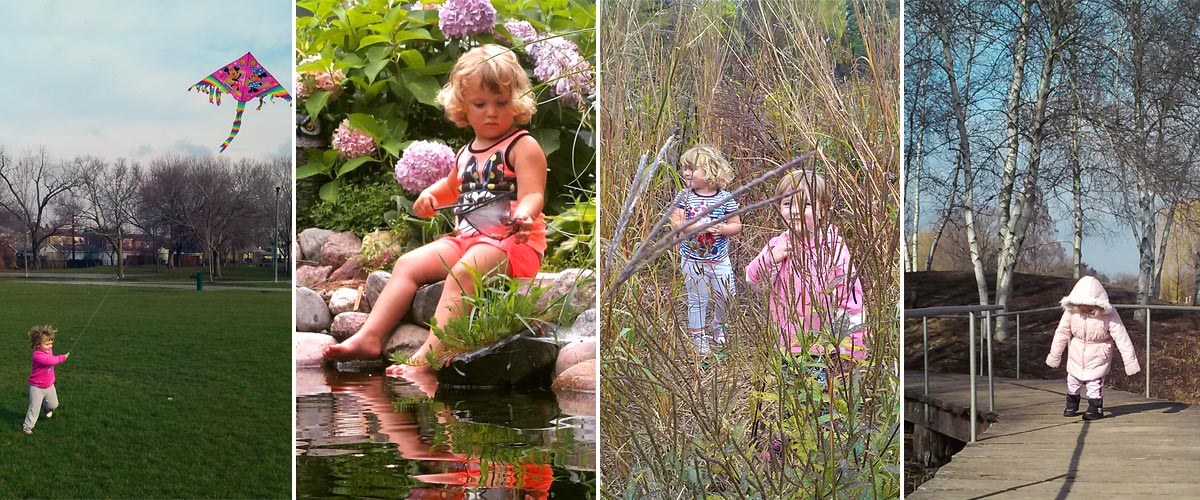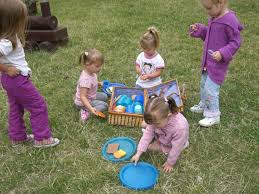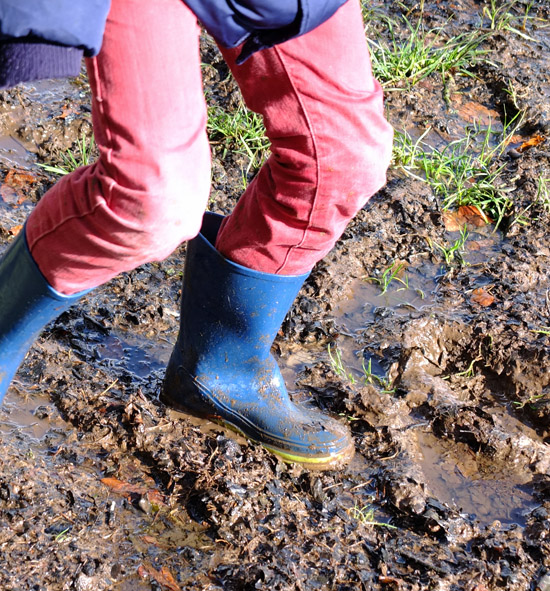
Aistear Guidelines for Good Practice discusses where and how children like to play Children love to play inside and outside, and benefit from both. Some children will take part in activities more enthusiastically, and show greater confidence in the outdoor environment than inside. Ideally the outdoor play area should be directly connected to the indoor area providing ease of access throughout the day. Most of the things that can be done inside can also be done outside, for example reading stories, taking part in pretend play, doing group art projects, and playing with sand or water. In the outdoors, activities can also be provided on a larger and more expansive scale (NCCA 2009 Aistear Guidelines for Good Practice pg. 55.)
Playing outside provides opportunities for young children to experience the world with all of their senses, this does not always have to be in a forest or green grass areas, children's senses are also heightened in urban spaces where the smells, textures, light, and noise may be different. Young children learn through the type of place or environment they are in. In outdoor spaces children can shout or be noisy, create bigger structures play games which require more expansive movements use their imagination in different ways, be more creative, messier and try out different activities, children learn best through different hand on experiences, exploring, experiencing, experimenting and making new discoveries.
Research tell us that the experiences children have through quality outdoor play has a great influence and effect on the growth of their brain  and creates strong foundations for future development in all areas.
and creates strong foundations for future development in all areas.
Playing freely outdoors helps children with the development of social skills, spatial awareness, cooperation, communication and sensory awareness. Outdoor play can also assist children to learn about decision making, develop their ability to share, develop conceptual ability, the ability to imagine an idea without seeing it in practice, learn about their body and their ability as well as become more independent and address their fears.
Children ned to be provided with opportunities to try out new things this may involve children getting dirty, wet, or falling over, these experiences help to build children's confidence and is an important part of learning about skills and limitations. Everyday life involves a certain degree of risk and children need to learn how to cope with this from an early age. Children need to learn how to take calculated risk, In order for this to happen children need to be provided with challenges and adventurous play and to move freely. Setting too many limits to children's adventurous play and not providing substantial amount of time outside could impede children's creativity, self-confidence, social skills and ability to concentrate.
 Marjorie Ouvry , Education consultant advise that movement can be particularly helpful for children with special needs “Limiting the right of children to be active throughout the day (and in all weathers) can lead to early signs of ADHD.” Outdoor play matters Barnardos 2014.
Marjorie Ouvry , Education consultant advise that movement can be particularly helpful for children with special needs “Limiting the right of children to be active throughout the day (and in all weathers) can lead to early signs of ADHD.” Outdoor play matters Barnardos 2014.
So let’s get out there and reconnect with nature and remember that all of the expensive equipment cannot replace the experience of hands on experiences with natural materials, outdoor spaces are full of open ended materials.